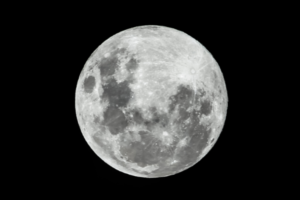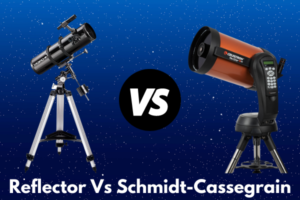How to Find Andromeda Galaxy With My Telescope
Want to uncover the secrets of the universe? Curious about how to find the Andromeda Galaxy? Stop feeling lost in space and get ready to navigate through the cosmic expanse. In this guide, we’ll show you how to locate this majestic galaxy, contrasting its beauty with distant stars. Buckle up for an astronomical journey that will leave you stargazing in awe.
Understanding the Andromeda Galaxy
Locating the Andromeda Galaxy
To locate the Andromeda Galaxy, look towards the constellation Andromeda in a dark, clear sky. It appears as a faint smudge and can be seen with the naked eye. Use binoculars or a telescope for a clearer view.
Can be spotted near constellation Andromeda
Visible as faint smudge under dark skies
Using Reference Points
Identify bright stars like Alpheratz and Mirach to navigate towards the galaxy. Look for M31, also known as Messier 31, which is another name for the Andromeda Galaxy.
Importance of Dark Sky for Viewing
Importance of Dark Sky
To find the Andromeda Galaxy, a crucial aspect is the dark sky. Light pollution from cities and towns can make it challenging to view celestial objects clearly. Optimal viewing conditions are found in remote areas with minimal artificial light, such as dark sky preserves or national parks renowned for stargazing opportunities.
Dark sky locations play a vital role in enhancing visibility when observing astronomical wonders like the Andromeda Galaxy. By escaping light pollution, observers can experience clearer views of the night sky and its celestial bodies.

Choosing the Right Telescope
Magnification and Aperture Size
When searching for the right telescope to find the Andromeda Galaxy, it’s crucial to consider magnification and aperture size. A higher magnification allows you to see more details, while a larger aperture gathers more light for clearer images.
Consider a reflector telescope for its affordability and light-gathering capabilities. These telescopes are popular among stargazers due to their ability to produce bright images of celestial objects like the Andromeda Galaxy.
Portability, Ease of Use, and Budget
Factors such as portability, ease of use, and budget play significant roles in selecting a telescope. Opt for a telescope that is easy to set up and operate if you’re new to stargazing. Consider your budget when choosing between different telescope models.
Pros:
Reflectors gather more light.
Affordable options available.
Cons:
Larger apertures can be less portable.
Enhancing Views with Binoculars
Wide Field of View
Binoculars can be a fantastic tool for exploring the Andromeda Galaxy, especially when paired with telescopes. They provide a broader field of view compared to telescopes, making it simpler to locate celestial objects like the Andromeda Galaxy in the night sky. With their wider field of view, binoculars offer a more panoramic perspective, allowing you to easily spot distant galaxies and clusters.
Using binoculars on clear evenings can enhance your stargazing experience by revealing intricate details of the Andromeda Galaxy that may not be visible to the unaided eye. Their ability to capture more light than our eyes alone enables you to observe fainter stars and structures within this cosmic marvel.
Binoculars offer a wider field of view
They make it easier to locate celestial objects
Enhanced visibility on clear evenings
Optimal Features
To maximize your viewing experience of the Andromeda Galaxy using binoculars, opt for models with higher magnification power and larger objective lenses. Higher magnification allows you to zoom in closer on specific areas within the galaxy while larger objective lenses enable better light gathering capabilities for clearer images.
When selecting binoculars for stargazing tours, prioritize those with specifications such as increased magnification power (e.g., 10x) and larger aperture sizes (e.g., 50mm). These features will help reveal finer details of the Andromeda Galaxy’s oval shape and glowing core.
Techniques for Finding the Andromeda Galaxy
Star-Hopping
Star-hopping is a useful method to pinpoint celestial objects like the Andromeda Galaxy in the vast night sky. By using recognizable star patterns, you can navigate from one star to another until you reach your desired target. For instance, starting from a bright star and following a specific pattern of surrounding stars can guide you towards locating Andromeda.
Using this technique enhances your stargazing experience by allowing you to actively engage with the night sky. It’s like connecting dots in a giant cosmic puzzle where each star acts as a piece leading you closer to finding the majestic Andromeda Galaxy.
Technology Assistance
Another way to locate the Andromeda Galaxy is by leveraging technology such as smartphone apps or traditional tools like star charts. Smartphone apps provide real-time information about celestial bodies’ positions, making it easier for beginners to identify and find galaxies like Andromeda accurately.
With these technological aids, stargazers can align their viewfinders precisely toward where Andromeda lies based on current data. Furthermore, utilizing prominent constellations as guides can also help enthusiasts navigate their way through space and discover wonders such as the magnificent Andromeda Galaxy.
Star-Hopping from Cassiopeia to Locate Andromeda
Navigating with Cassiopeia
Cassiopeia, a W-shaped constellation, acts as a starting point for finding the Andromeda Galaxy. By following specific stars in Cassiopeia, you can move towards the general direction of Andromeda.
Star charts are helpful tools when star-hopping. They provide guidance on which stars to follow and help you navigate accurately through the night sky. By using star charts alongside identifying key stars in Cassiopeia, locating the Andromeda Galaxy becomes more manageable.
Tracing Your Path
When star-hopping from Cassiopeia to find Andromeda, it’s essential to understand that this method involves tracing your path visually rather than pinpointing exact coordinates. This technique allows stargazers to enjoy the process of navigating through constellations and appreciating the vastness of space.
Observing Alpheratz and Mirach to Find M31
Using Alpheratz as a Reference Point
Alpheratz, a bright star in the Andromeda constellation, serves as a starting point for locating the Andromeda Galaxy. This prominent star acts as a guidepost in the night sky.
Pros:
Easily identifiable reference point
Simplifies navigation towards M31
By recognizing Alpheratz’s position and understanding its relation to other celestial bodies, you can effectively navigate your way towards the Andromeda Galaxy.
Drawing an Imaginary Line to Mirach
From Alpheratz, draw an imaginary line leading to another bright star called Mirach. This technique helps create a visual path that points towards the approximate location of M31.
Pros:
Establishes a clear direction for finding the galaxy
Simplifies identification process
Notable Sights within the Andromeda Galaxy
Central Bulge and Spiral Arms
The Andromeda Galaxy showcases distinct features like its central bulge and spiral arms. These components contribute to its mesmerizing appearance when viewed through a telescope. The central bulge is a dense, bright region at the galaxy’s core.
The spiral arms of the Andromeda Galaxy extend outward in graceful curves, housing various celestial wonders such as dust lanes, star clusters, and nebulae. These intricate structures add depth and complexity to the galaxy’s overall visual appeal.
Individual Stars and Clear Viewing Conditions
When observing the Andromeda Galaxy with higher magnification under clear skies, it is possible to discern individual stars within its vast expanse. This level of detail allows viewers to appreciate the sheer size and complexity of this neighboring galaxy in our cosmic neighborhood.

Observing M31, M32, and M110 in the Night Sky
Satellite Galaxies of Andromeda Galaxy
Satellite galaxies M32 and M110 can be observed along with the Andromeda Galaxy (M31). M32, a small elliptical galaxy near M31’s core, is visible with moderate telescopic power. On the other hand, M110, a dwarf elliptical galaxy farther from M31’s core but still influenced by its gravity.
Pros:
Offers additional celestial objects to observe besides the Andromeda Galaxy.
Allows for a broader exploration of deep sky objects in one viewing session.
Cons:
Requires adequate equipment like telescopes to view these fainter satellite galaxies.
Locating M32 and M110
To find these satellite galaxies within the night sky: focus your telescope near the bright star nearest to where you spot the Andromeda Galaxy. Once located, adjust your telescope’s magnification power accordingly until you catch sight of their faint glow amidst the darkness.
Start by identifying a bright star close to where you see the Andromeda Galaxy.
Use this reference point as a guide to navigate towards locating both satellite galaxies.
Adjust your telescope’s settings gradually until you capture clear views of both M32 and M110.
Closing Thoughts
You’ve now got the insider scoop on tracking down the Andromeda Galaxy like a pro. Remember, patience is key in this cosmic quest. Grab your gear, head to a dark spot, and start stargazing! With the right tools and a dash of determination, you’ll be spotting M31 in no time. So, what are you waiting for? The stars are calling – go out there and explore the wonders of our universe!
Frequently Asked Questions
How can I locate the Andromeda Galaxy in the night sky?
To locate the Andromeda Galaxy, start by identifying Cassiopeia and then “star-hop” to find it. Look for Alpheratz and Mirach as guide stars to lead you to M31, M32, and M110 within the Andromeda Galaxy.
What equipment do I need to observe the Andromeda Galaxy effectively?
To observe the Andromeda Galaxy clearly, you will need a telescope with sufficient magnification power and aperture size. Using binoculars can enhance your viewing experience by providing a wider field of vision.
What is special about observing M31, M32, and M110 within the Andromeda Galaxy?
Observing these celestial objects within the Andromeda Galaxy offers a unique opportunity to witness different types of galaxies – from spiral galaxies like M31 (Andromeda) to dwarf elliptical galaxies like M32 and irregular galaxy structures like M110.
Why is having a dark sky important for viewing celestial objects like the Andromeda Galaxy?
Having access to a dark sky free from light pollution is crucial for optimal stargazing experiences. Dark skies allow your eyes to adjust better to low-light conditions, enabling you to see fainter celestial objects such as distant galaxies more clearly.
Can I use any telescope or binoculars for observing the Andromeda Galaxy?
While any telescope or binoculars may offer some view of the galaxy depending on their specifications, using equipment with appropriate magnification power and lens quality will significantly enhance your ability to observe details within the vast expanse of the Andromeda Galaxy.
Written by:

Kavya Joshi
My love affair with space began in a field in India at the age of 7, when I looked up at the Milky Way for the first time. Ever since, I have been attempting to cram in every fact about the Universe, I can find into my head.
ABOUT US
We are a team of active amateur astronomers, here to help you with all your astronomy and science related needs – this is anything, from reviewing the latest telescopes to be released to talking about gravity and neurons. The Big Bang Optics was started because of our love for astronomy and to help others like us find the best telescope and accessories.
LEGAL DISCLAIMER
The Big Bang Optics is a participant in the Amazon Services LLC Associates Program, an affiliate advertising program designed to provide a means for sites to earn advertising fees by advertising and linking to Amazon.com. The Big Bang Optics also participates in affiliate programs with Clickbank and other sites. The Big Bang Optics is compensated for referring traffic and business to these companies.




